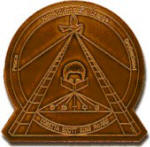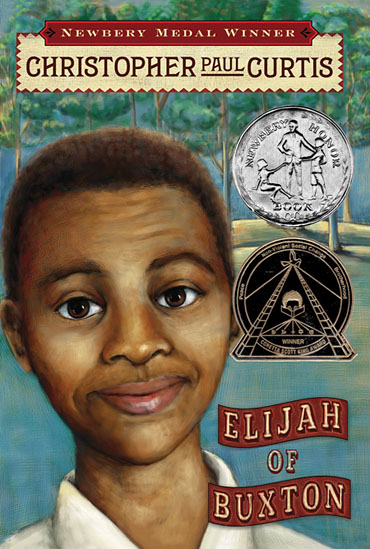By:
Christopher Paul Curtis
Published
by Scholastic Press, 2007
Reading
Level: Lexile 1070
Group
Read, 5.5
Eye-Opening,
Encouraging, Powerful, Unforgettable, Hopeful

In the 1850’s, eleven year old
Elijah Freeman was the first free born in Buxton Canada. Buxton is a settlement
made up completely of runaway slaves from the South, situated just over the
border of Detroit. Elijah attends school, helps out at Mr. Segee’s farm and
often asking permission to take Old Flapjack (horse) to a lake to catch fish
and also helps Mr. Leroy who is the town’s handy man getting paid by the people
to obtain enough money to buy his family’s freedom. Elijah is well known for
being sensitive; “fra-gile” is what his mother often calls Elijah. Elijah knows
of the hard times of slavery by the ‘grown up’ talk that he so often wishes he
would be seen as a grown up but never truly knows what slavery is until seeing
for himself. Elijah sees himself as grown when helping Mr. Leroy find a
dishonest preacher whom has took all of his friend’s money which was to be used
to buy his family. Traveling back into America, a risky task in itself, sees the horrible life his parents escaped from and puts himself
in danger of being captured as he tries to find the preacher, the money and the
hope of getting Mr. Leroy’s family out of captivity. Upon returning to Buxton,
Elijah now knows firsthand the hardships his family has left and will never
forget the family he met while in America and quite frankly, neither will I.
Key Vocabulary: I would suggest having your students
listen to the first few pages of the book through the audio version, to allow
them to hear how those from the South talked back in the 1860’s and so that
they can read with that tone of voice. Your students may ask you what words
mean due to the accent from the South. The words below are often said
throughout the book:
Twixt = between
Afore = before
‘Stead = Instead
He’d’ve = he would have
Many
of the other words just drop one or two letters of the beginning word and your
students should be able to pick up what the word is.
To
expand your students vocabulary be conscious of the following words popping up
within the book. Fretting (45), familiarity (87), peculiarities (101), rigmarole
(119), bevy
(121), calamity (247)
Teaching Suggestions –
During
Reading: Have students map
out the route that is discussed within the book of the passageway from the South
to Ontario, Canada. Allow them to Research the area of Canada where Elijah and
other runaway slaves were able to start their life of freedom and William King
who is the founder of the prestige Elgin Settlement. For additional reading (if
you are able to purchase) copy some pages out of the book, Something to Hope For. The Story Of The Fugitive Slave Settlement
Buxton, Canada West for a more historical history of Buxton Canada. To work
with your student’s imagination, allow your students to research images and
make a collage of what the setting and characters of Elijah of Buxton may look like.
After
Reading: Engage your
students in a book discussion with the following questions.
1.
What
do you think of the Preacher? Is he trustworthy? How would he justify his
actions?
2.
What
do you think “familiarity breed contempt” means? How does this concept relate
to Elijah’s relationship with Mr. Leroy or the Preacher?
3.
On
page 158 it says “the second hardest step in making yourself free is the first
one you take . . . . [and] that the most hardest step is the very last one.”
What do you think that means? Why is the last step the hardest?
Talk
It Up! Book discussion website provides 6 more (total of 9) well thought out
questions for your students to divide up into groups answer 1 question per book
then have each group state their answers to the questions. The rest of the
class may chip in their thoughts after each question and you may call upon some
of the students who don’t likely speak up in class to get their point of view.
Buxton National Historic Site and Museum: Students will be able to get a feel of what Buxton was like over a century half ago by visiting this historical site. Virtual exhibits are available due to the fact that the museum is located in Canada and unfortunately are not able to travel to. Educational packages and resource materials are also available for a small fee.
Author's Site: Christopher Paul
Curtis , the Newbery Medal and Coretta Scott King award-winning children’s author
introduces himself with a brief biography of his life and aspirations. For all
of his books he has multiple resources for each one right on his site ( which
is available to all for FREE)!


No comments:
Post a Comment